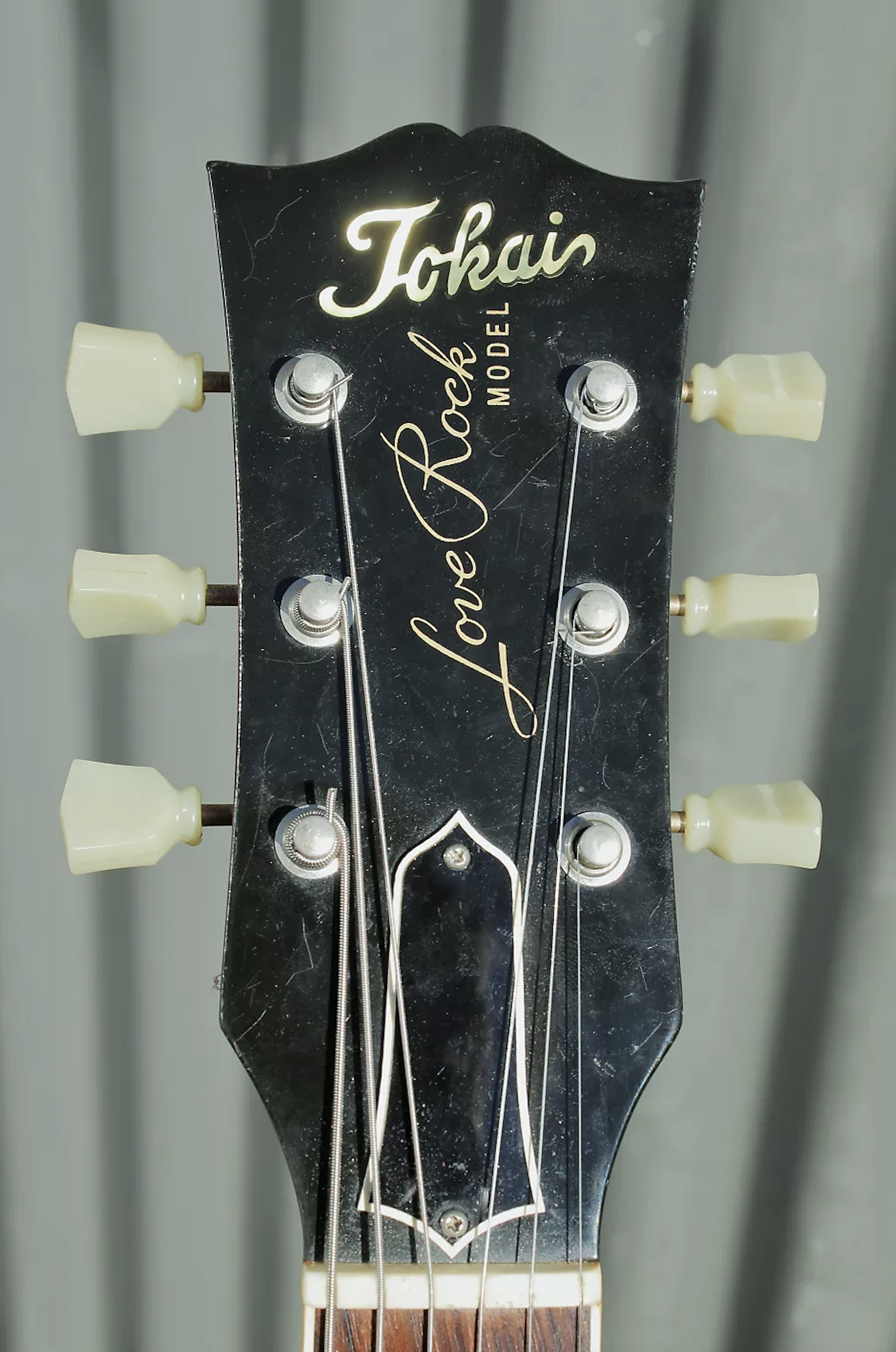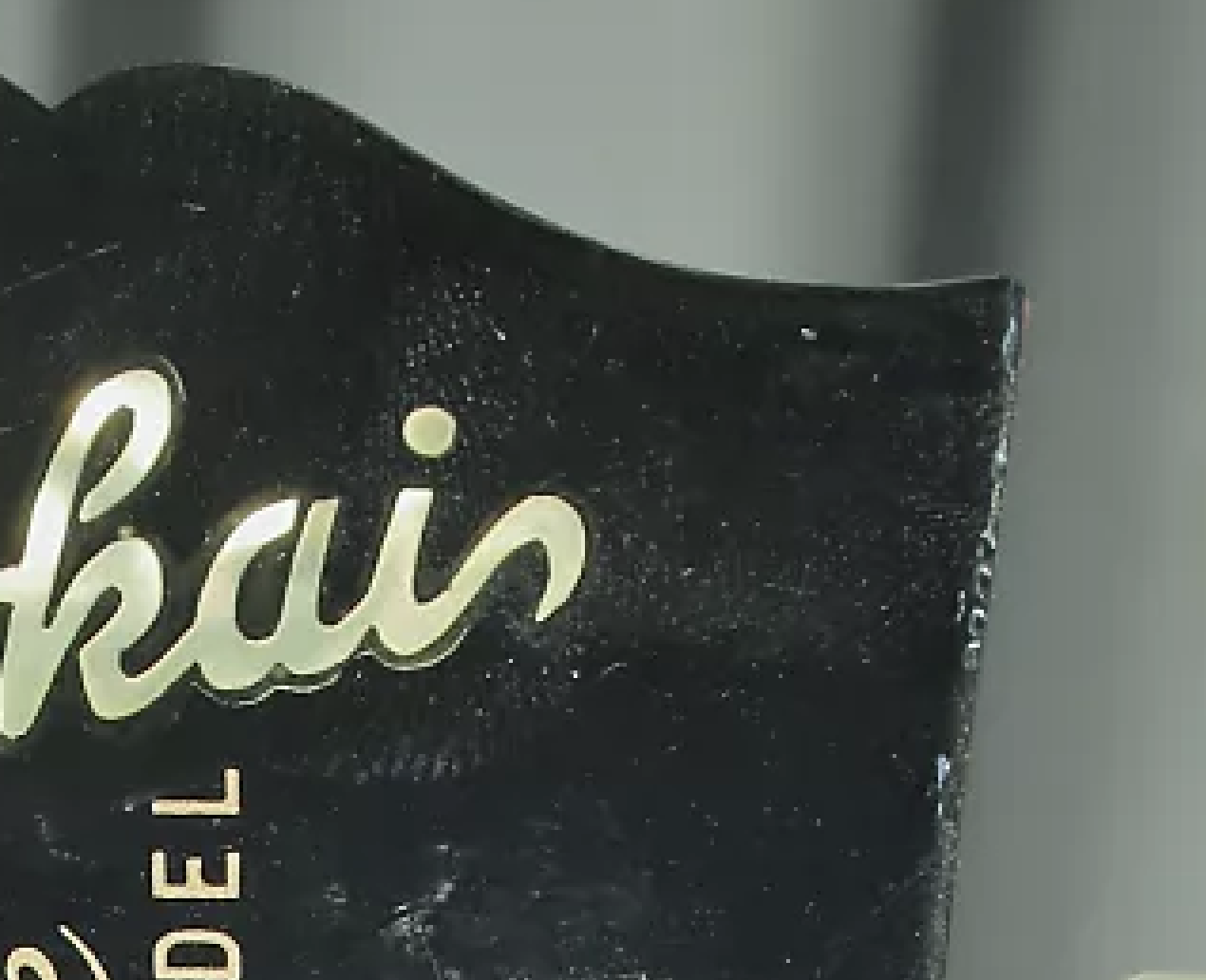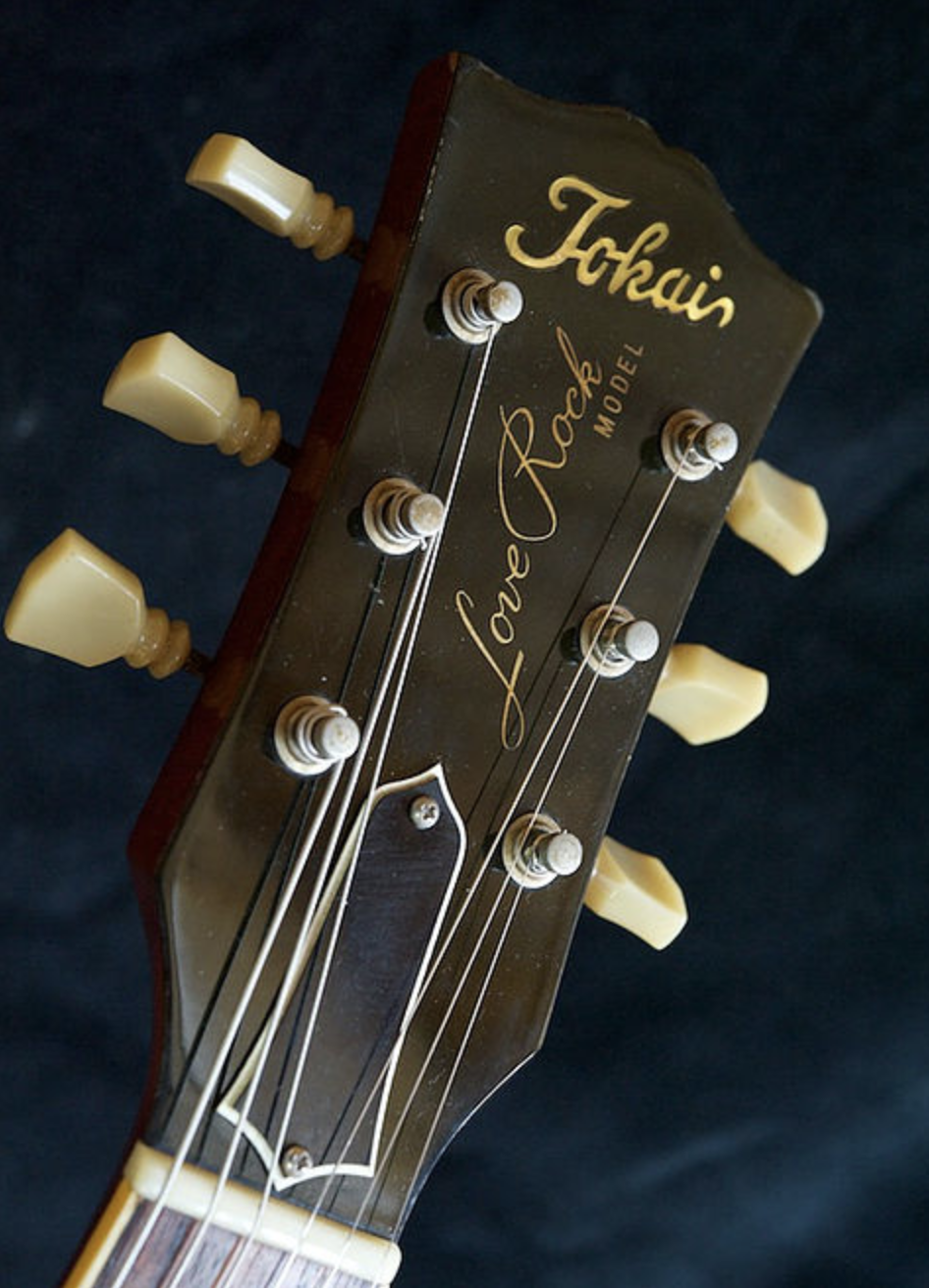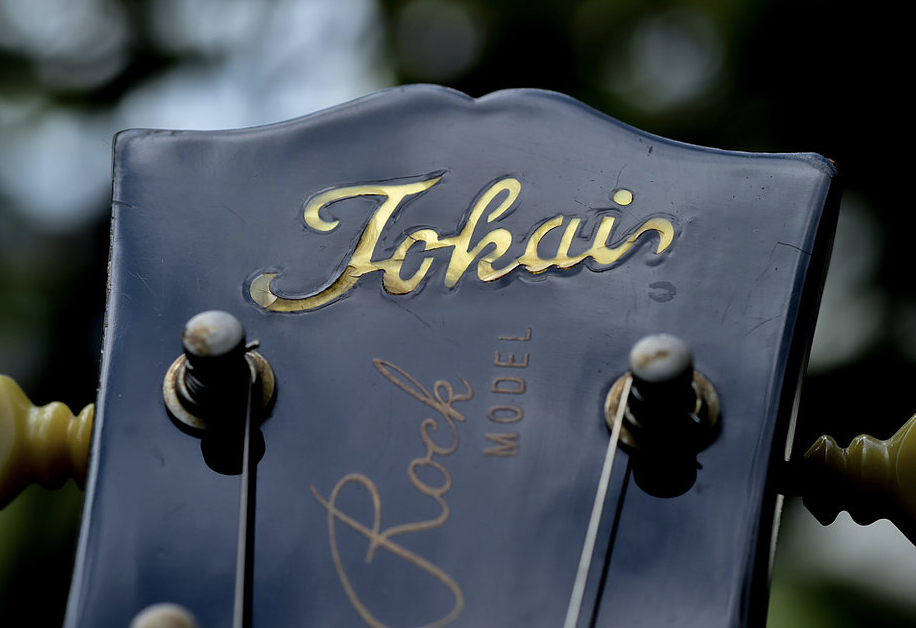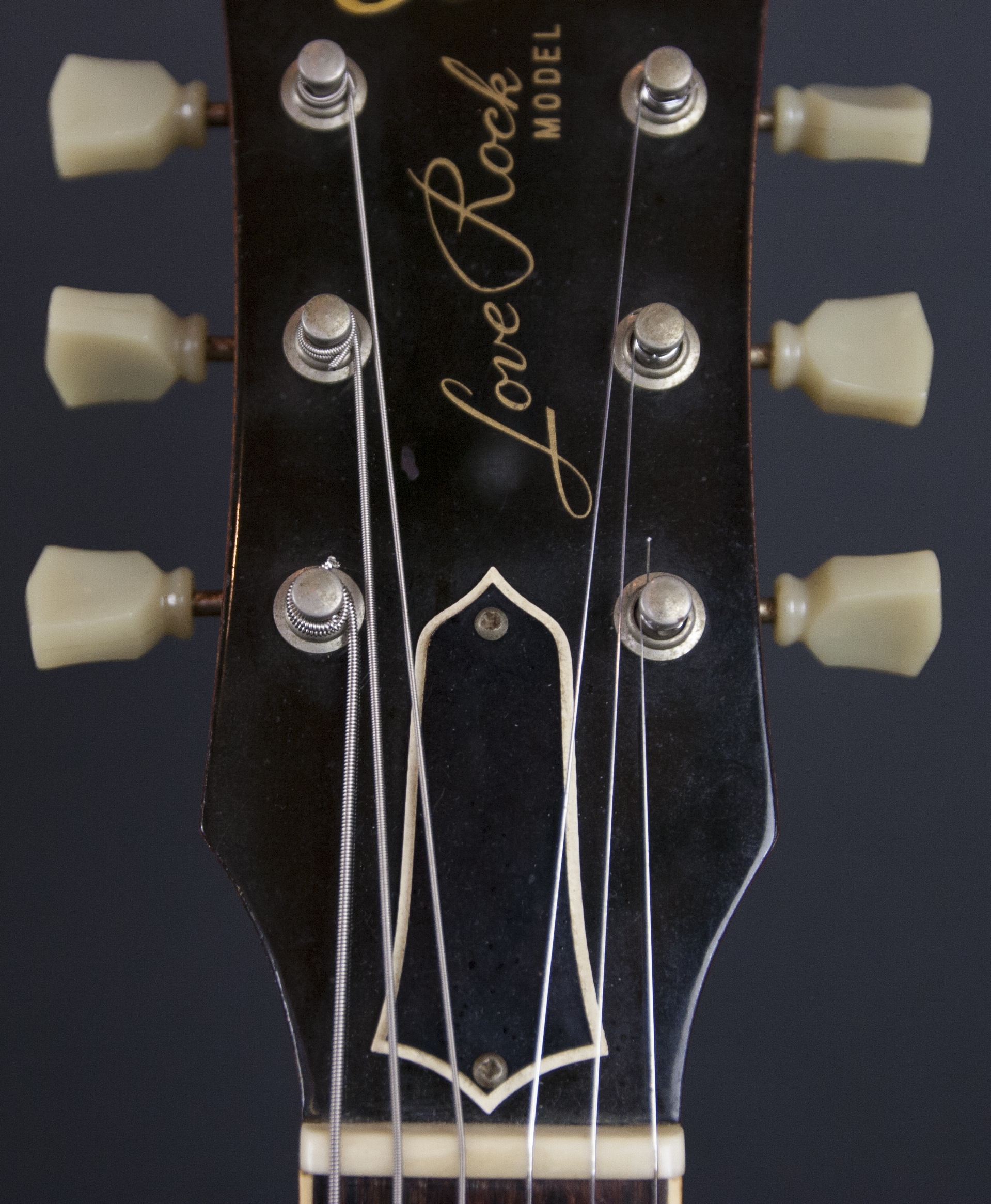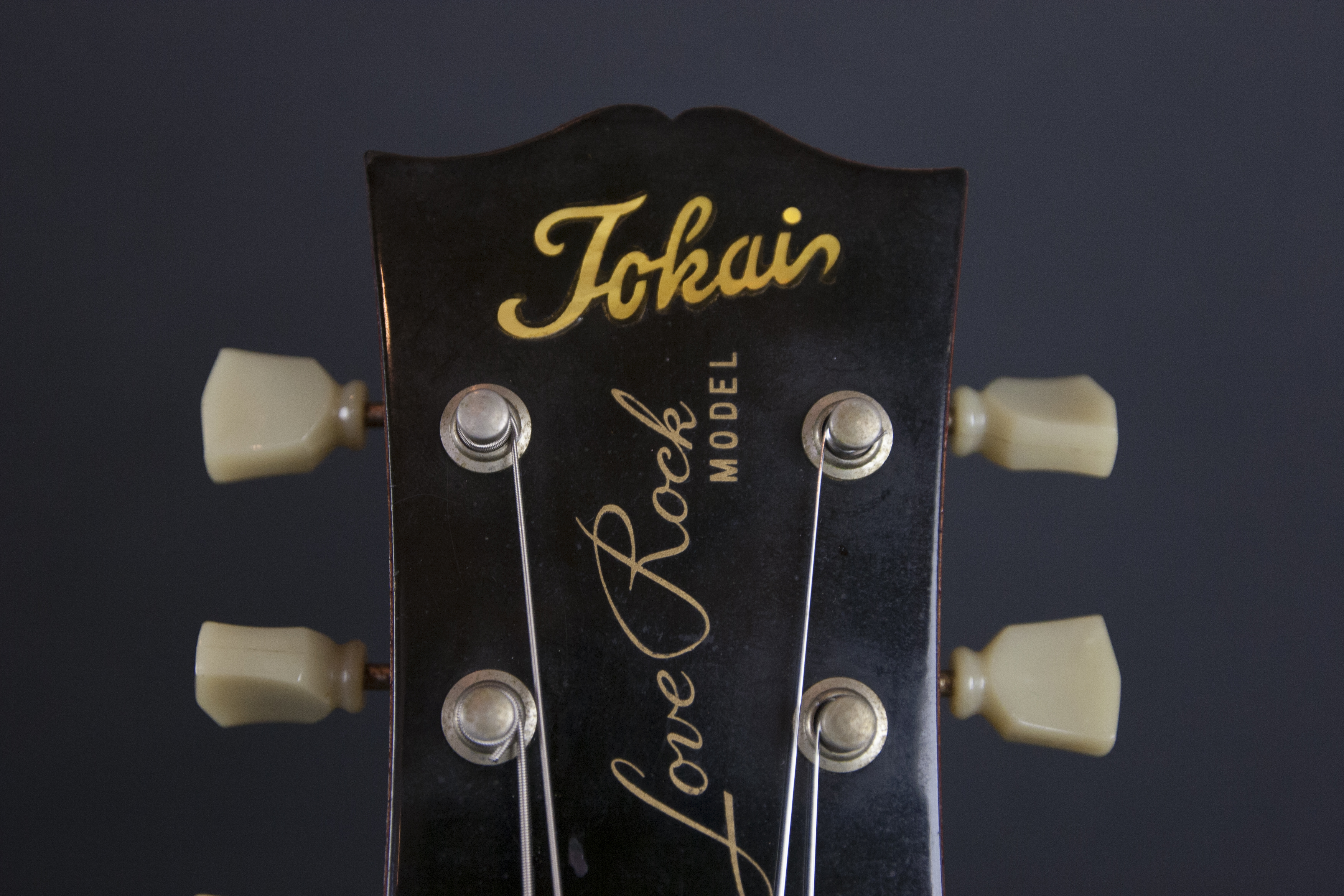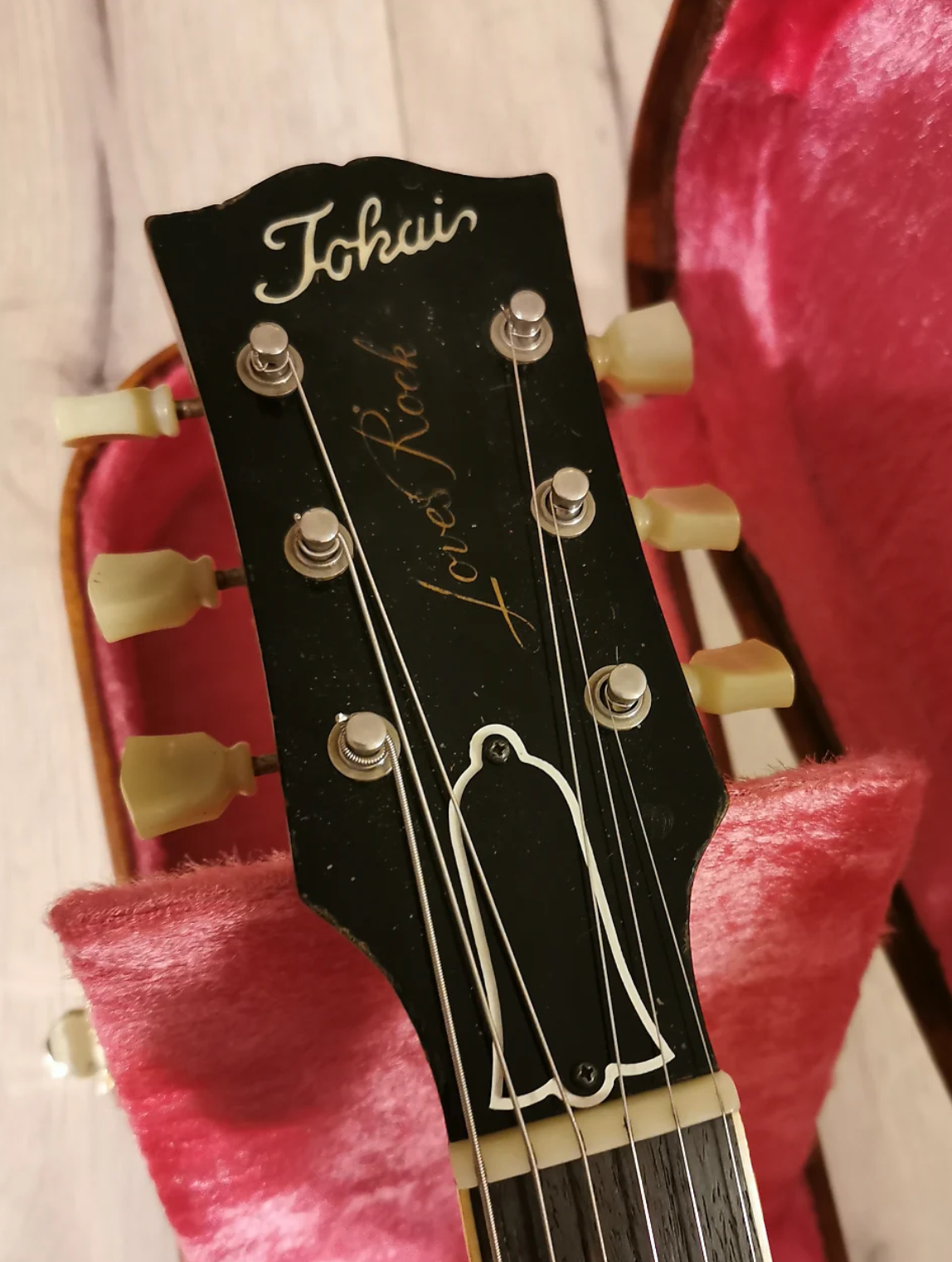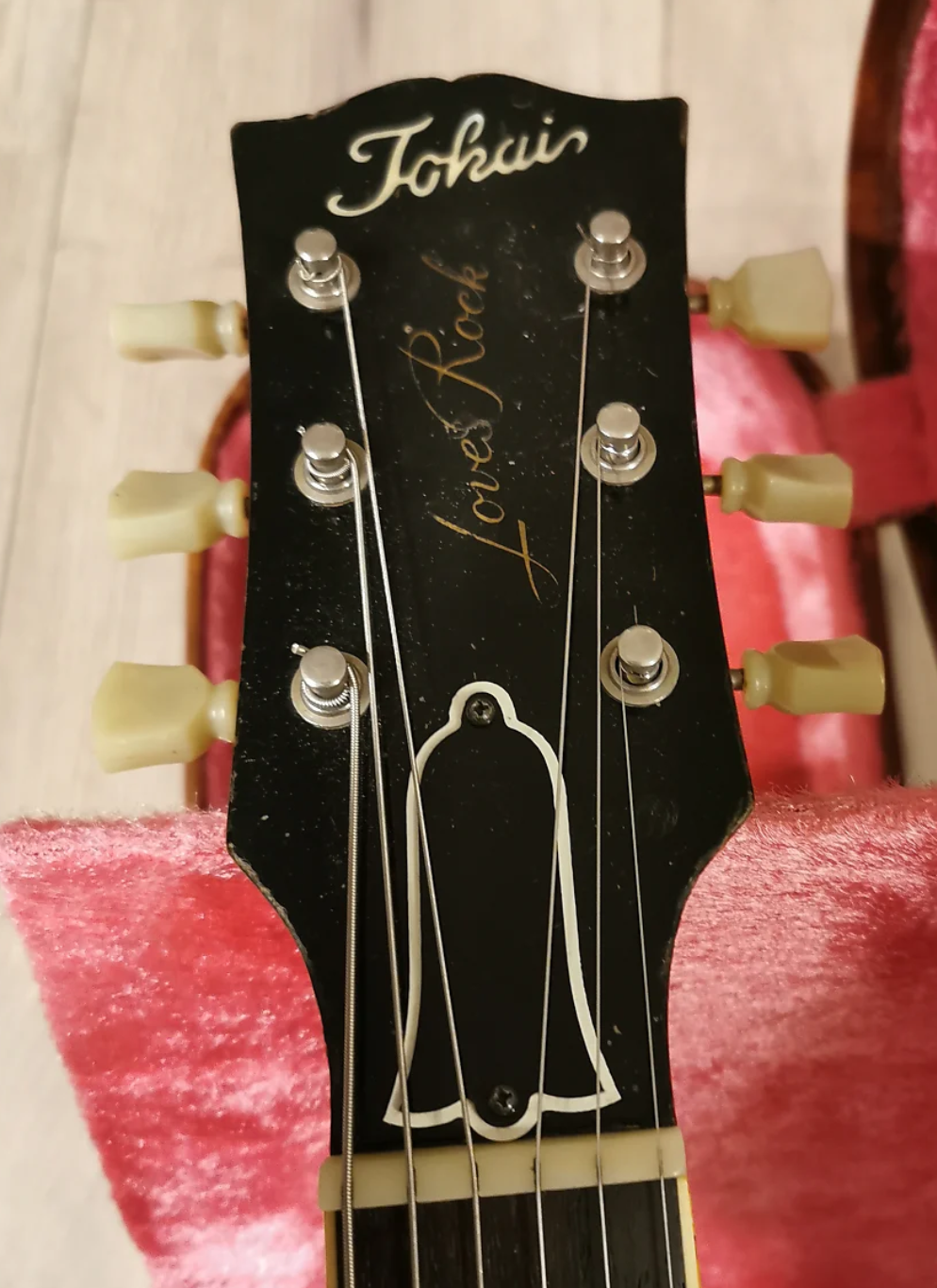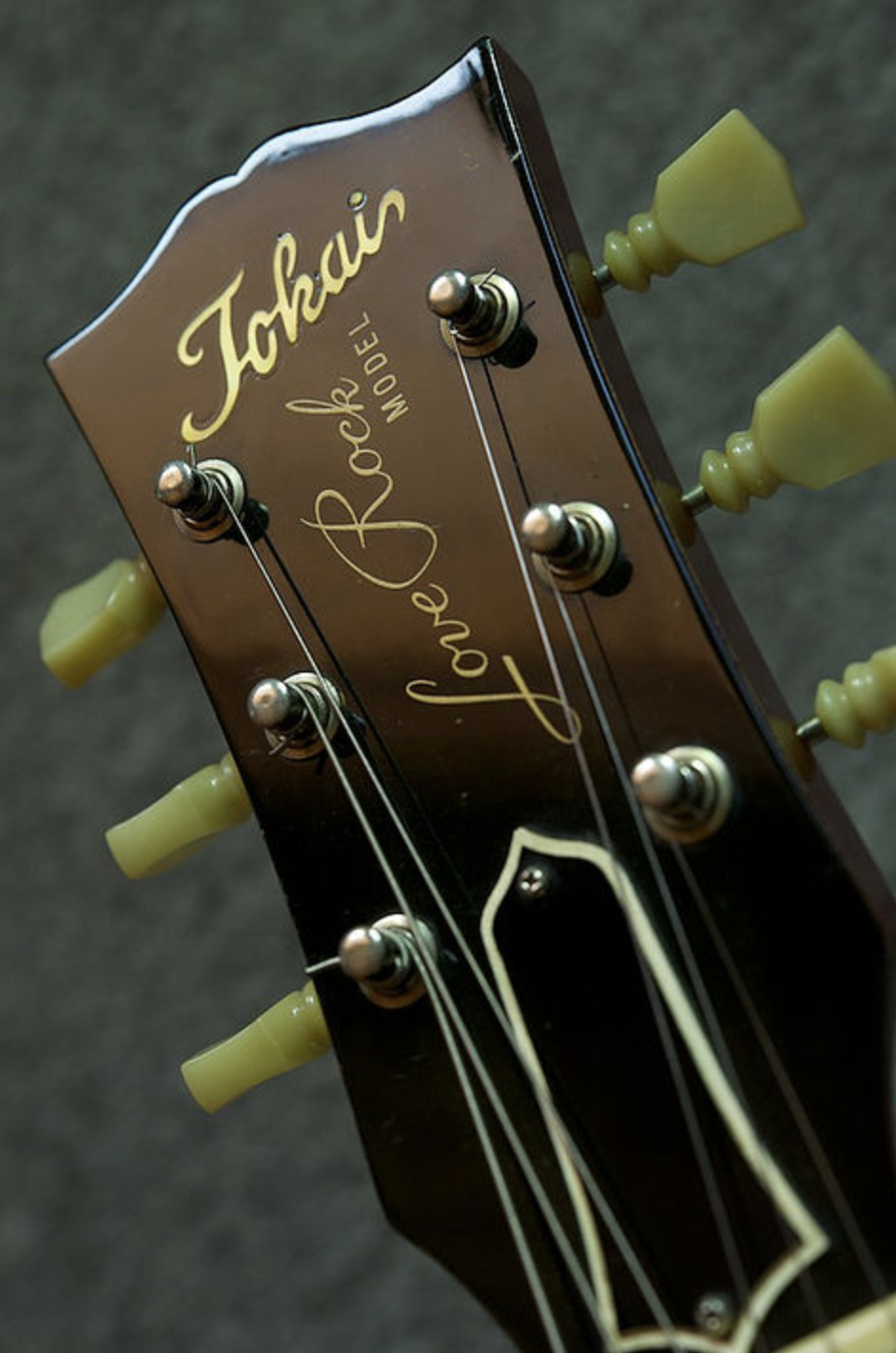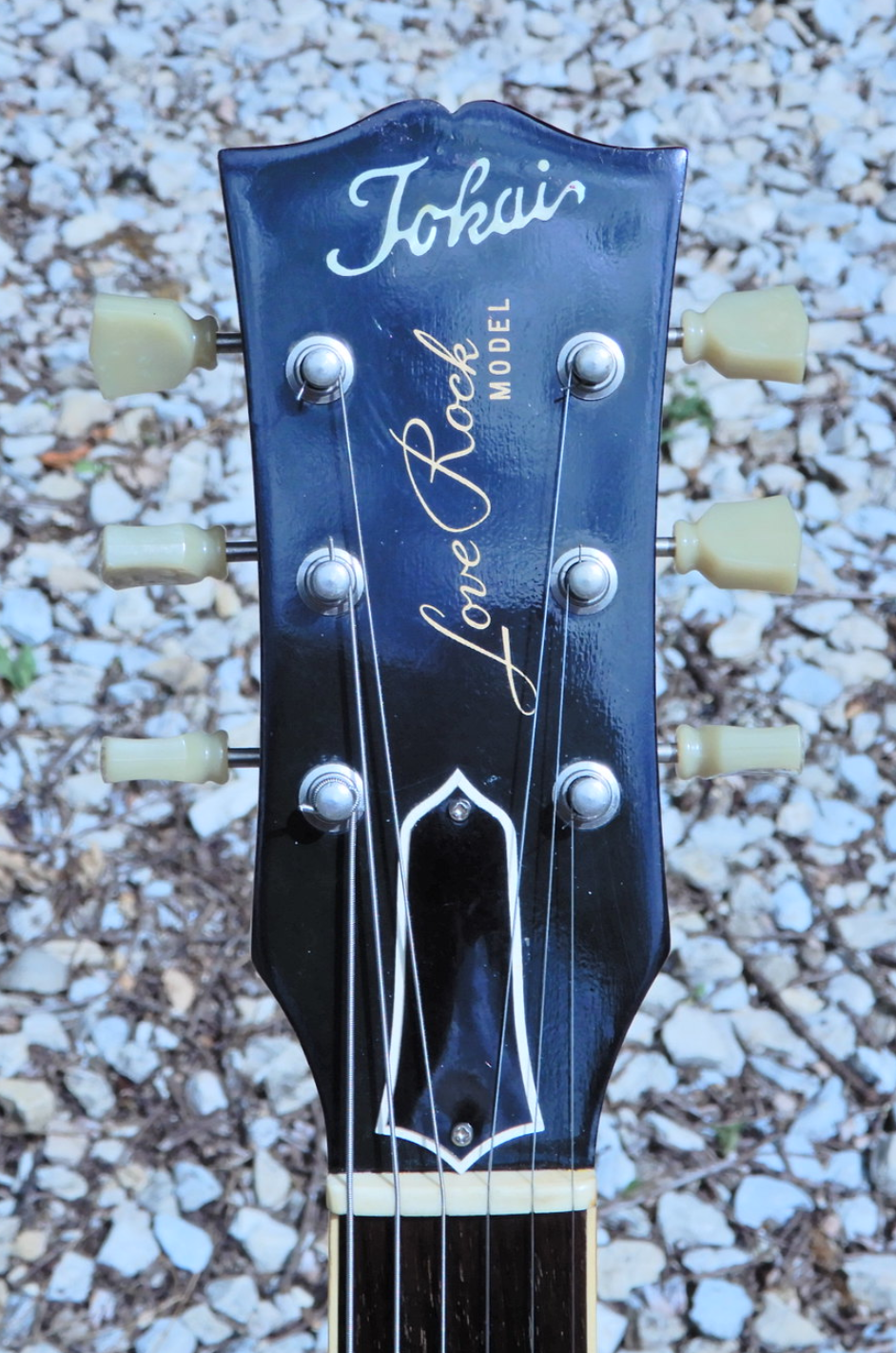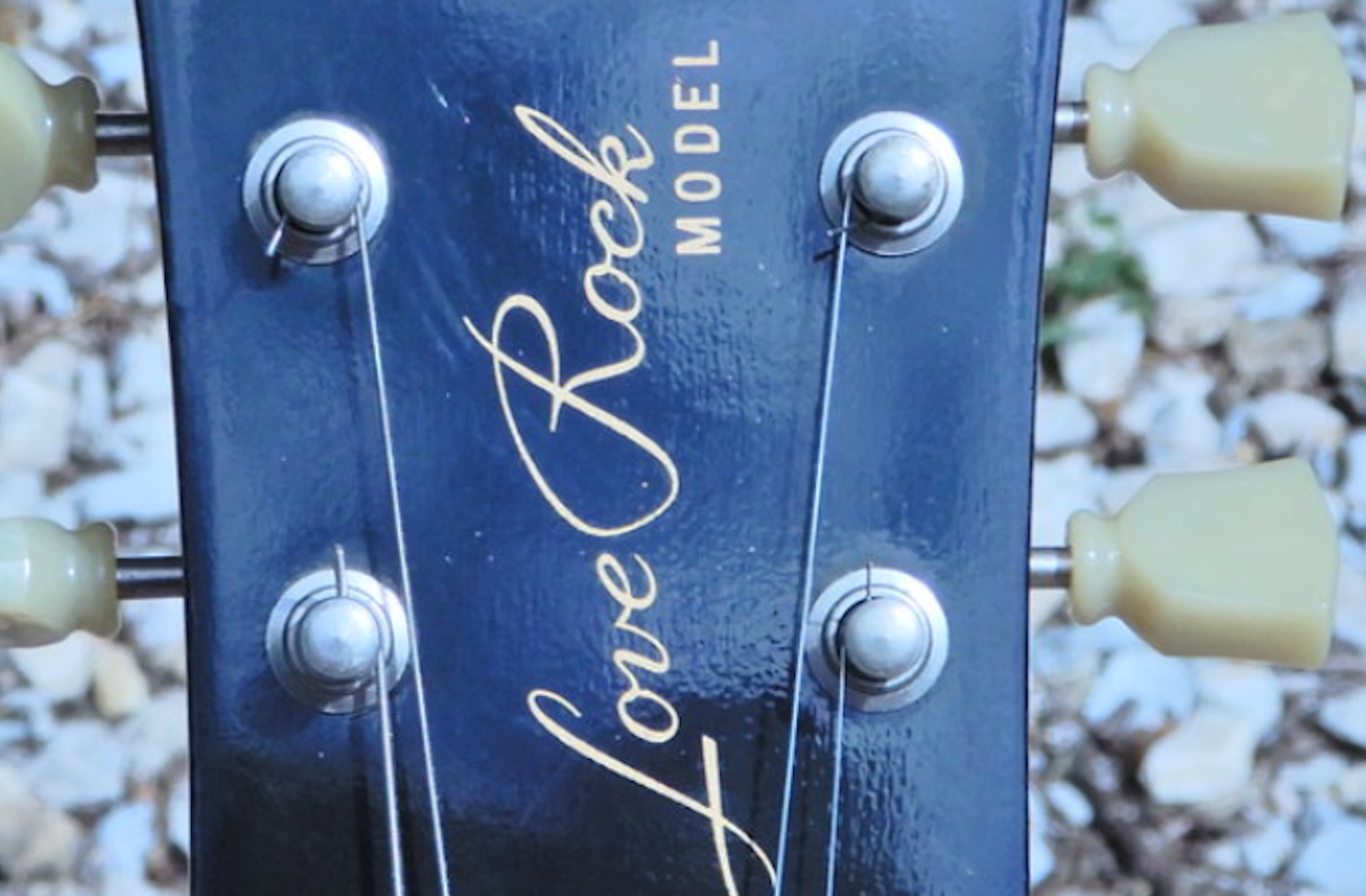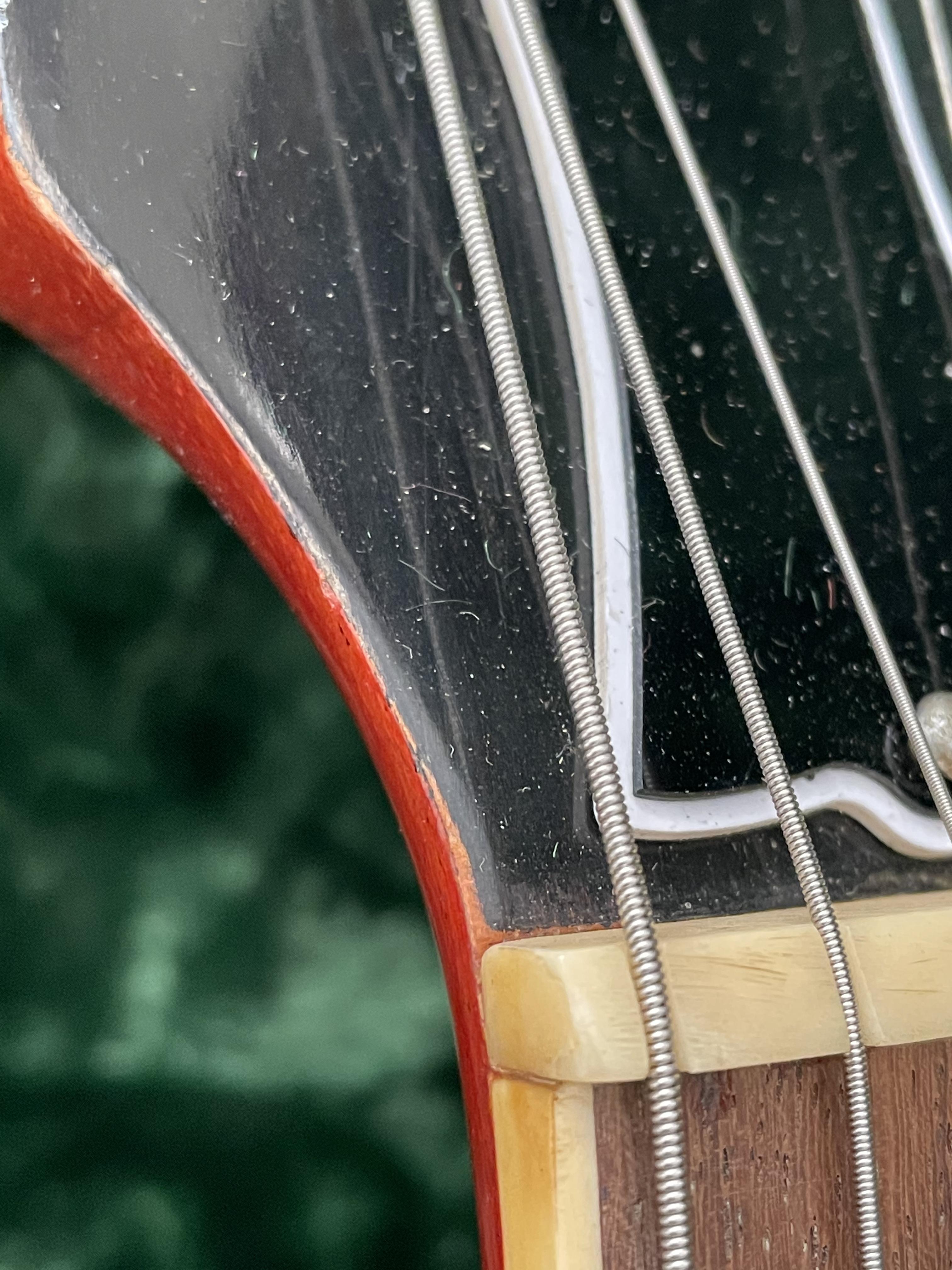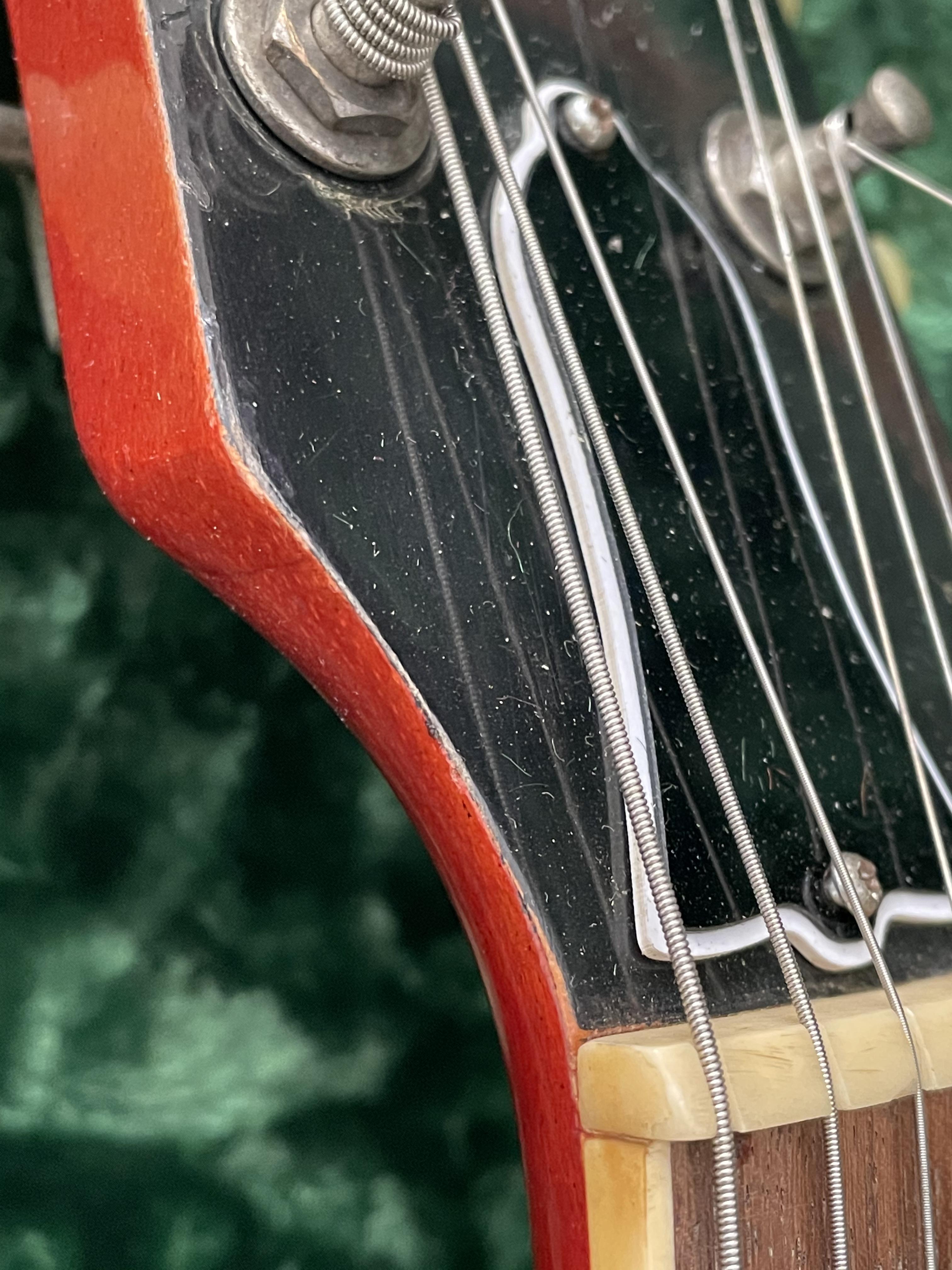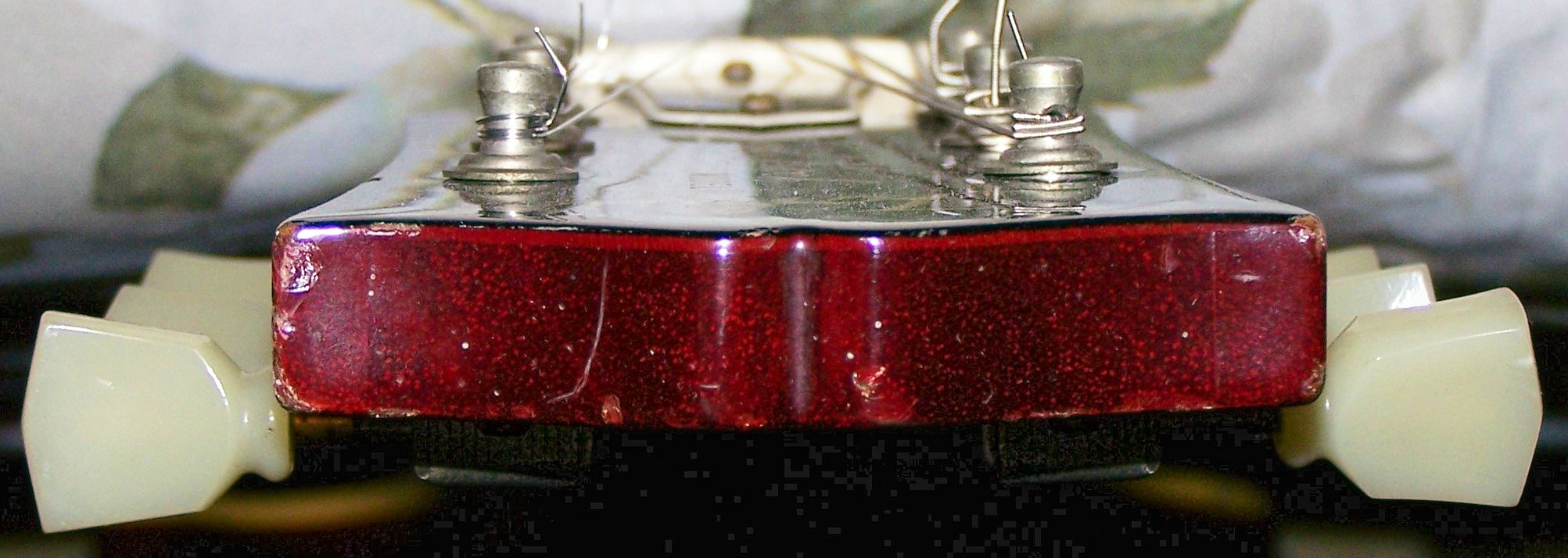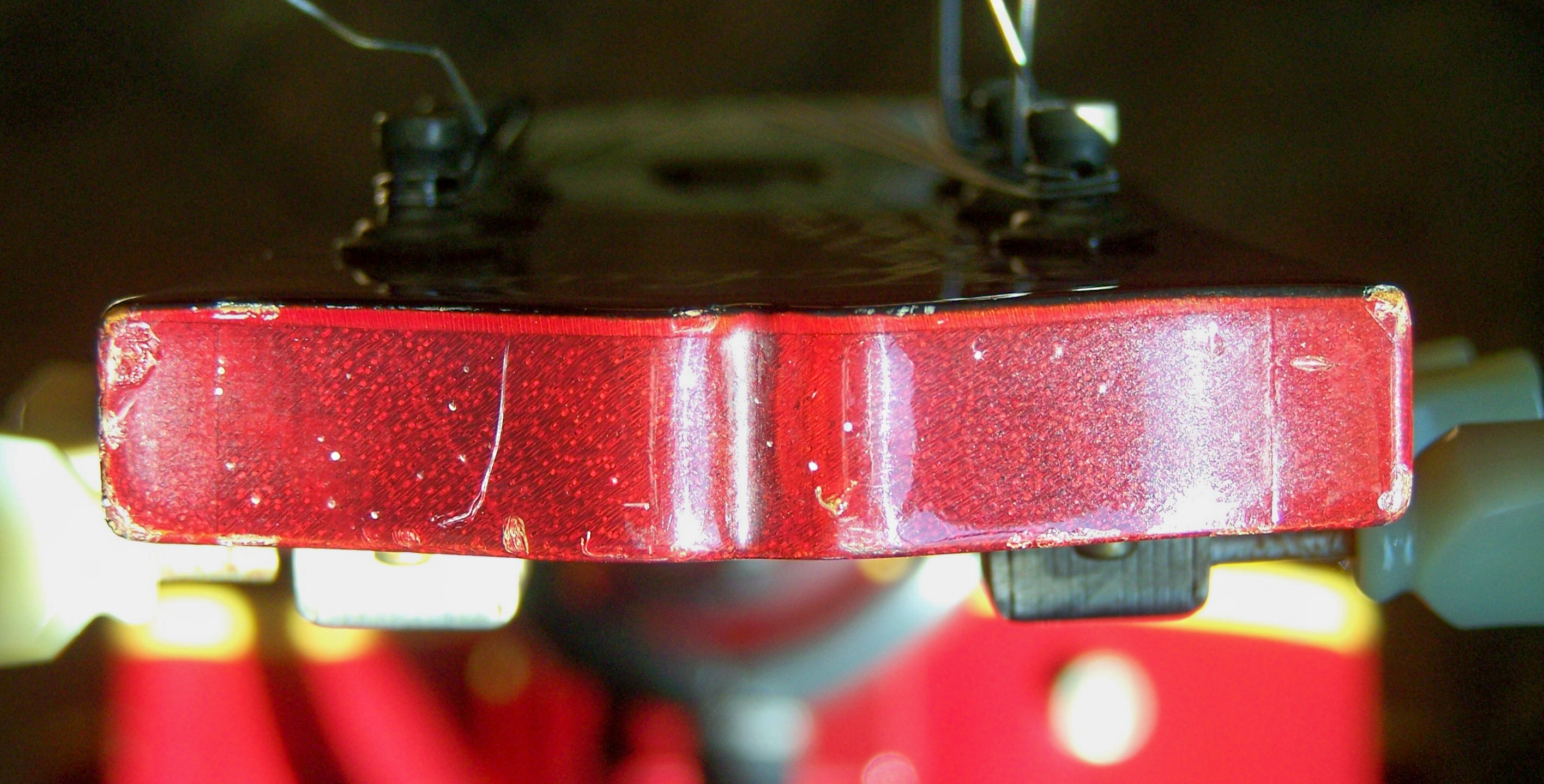So here is a photo of a 1980 LS50 "inkie" (serial number inked instead of embossed in the back of the headstock) with an obvious wood veneer.
I would have to say here that the rule that was emerging re: plastic type veneer up to some time in 1981/82(?) and then either a very thin and well hidden wood veneer or painted wood may not apply at all to "inkies".
While I am no expert on inkies, it seems clear that their production was different than the typical runs of Love Rocks. So production standards were apparently different. For example, I have seen pictures showing dowels joining the neck tenon to the body which I have not seen in a non inkie Love Rock, but have seen in other MIJ LP brands.
From my reading here on this forum, I believe inkies were actually made in different towns (Nagano for inkies, and Hammamatsu for the typical "run of the mill" Love Rocks).
Not sure of the arrangement with Tokai for producing these, but I have heard it was similar to contracting with a factory that produced guitars for different brands, a practice common at this time in Japan I believe.
That said, here is a picture of an inkie showing the wood veneer construction of the headstock. I have not seen this on non inkie Love Rocks of the period and if anyone else comes across photos please post them.
